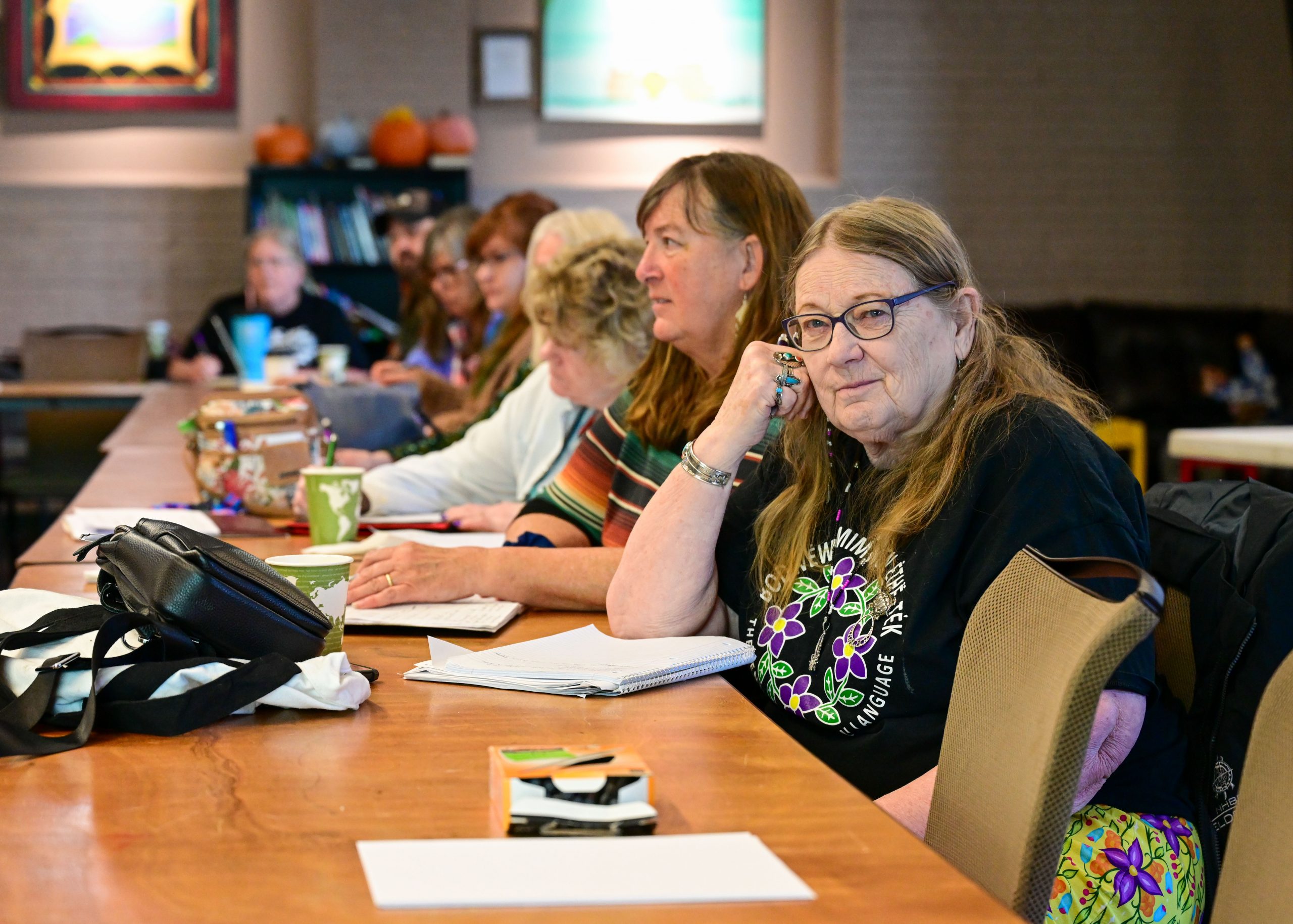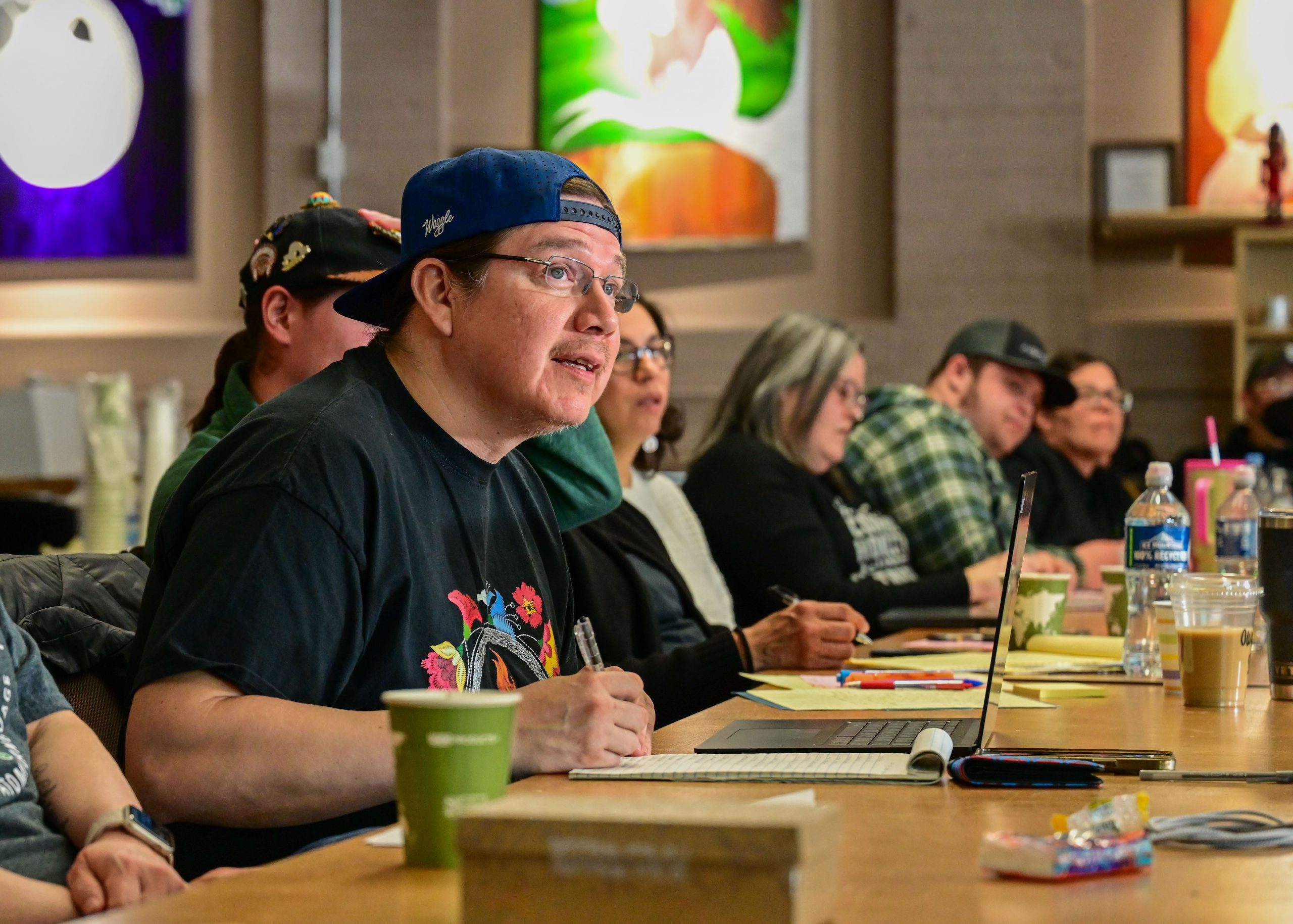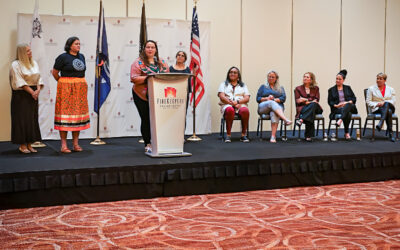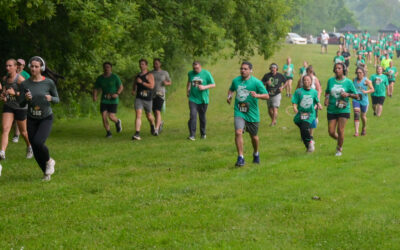Identifying the Patterns of Bodwéwadmimwen as a Community
As NHBP prepares to say bamapi {later in time} to the long, dreary days of winter, the NHBP Culture Department helps Tribal Members and other Neshnabék transition to spring by hosting its annual Nadwézibiniyêk Mnokmé Bodwéwadmimwen Mawtheshnowen {Spring Language Workshop}.
This year, on Friday, April 5, the Culture staff once again welcomed workshop participants interested in learning and revitalizing Bodwéwadmimwen, no matter their age or skill level, in-person or virtually.
“We appreciate having everyone here,” said NHBP Language Coordinator Mike Medawis in his welcoming statements. Medawis organized and structured the conference for participants. “We even have some guests in-person from Forest County Potawatomi Nation (in Wisconsin).”

Virtually, attendees hailed from across the country, all eager to revitalize the language during this day-long session.
Using the Learner’s Writing System of Potawatomi, Pokagon Band of Potawatomi Advanced Language Specialist Bmejwen Kyle Malott and Pokagon Band Advanced Language Specialist led nearly 30 people in-person and virtually through Bodwéwadmimwen lessons. The Learner’s Writing System derives from Jim Thunder-ben and his family and how they wrote the language, explained Malott.
Thunder-ben was renowned as one of the last fluent Bodwéwadmimwen speakers in modern times. Collins and Malott lived near Thunder-ben as his apprentices for four years to learn firsthand the intricacies of Bodwéwadmimwen, which one cannot simply learn from a book. The Learner’s system is still fairly new to the Community, only having been used and more widely accepted within the past decade.
“Eighty-five percent of our language is composed of verbs,” said Malott. “Bodwéwadmimwen is also full of patterns, and it is important to be able to recognize these patterns, and the way our language is structured, to be able to write and speak it.”
To help participants better understand this grammatical structure and to identify these patterns, Malott led two sessions during the day, both focused on colors. In the morning, the conference participants worked on inanimate nouns with their colors, always relating the subjects back to what they already are familiar with.

“‘Wabash’ means ‘comes from white clay,’” said Malott. “There’s the city of Wabash in Indiana, which was the southernmost point of Potawatomi territory during Treaty Time.”
Participants immediately recognized the word.
“That’s good to know; we have a road in Battle Creek named ‘Wabash Avenue,’” typed NHBP Tribal Historic Preservation Officer and Tribal Member Onyleen Zapata in the group chat, making the connection with our language and placing it into an everyday context.
Collins led the workshop by describing different body parts, especially with one’s face and head. The workshop attendees also walked through several ways to describe distinguishing attributes on people’s faces.
“If you teach or work with little kids, you can play the well-known game of ‘Simon Says’ to help them learn the body parts,” said Collins. “In just a couple of rounds, the kids will pick up these words.”
As the virtual attendees were instructed to come off mute throughout the workshop, they intoned the beautiful language, speaking it together as a Community, all learning and growing in their skill sets.
In the afternoon, Malott worked with animate nouns and their color descriptors. Once again, participants identified the crucial patterns that comprise Bodwéwadmimwen. Collins spent the afternoon further explaining body parts and how to describe their functions and common phrases around some of them.

“Ndë yékw’zedé – my feet are tired,” Collins taught the participants, which they all repeated. As it was nearing the end of the session and afternoon, this statement may have rung true for the group.
Collins and Malott do not simply assist the NHBP Culture Department with the Language Workshops twice a year, but they also have established a long-lasting and impactful relationship with NHBP.
Medawis currently works with them as their Language Apprentice. Collins and Malott pour forth the information, patterns and phrases they have learned to Medawis, all in efforts to revitalize Bodwéwadmimwen in a meaningful and impactful way for other Tribes, including NHBP.
“I go to Niles once a week with Carla and Kyle, spending my Thursdays learning the language, and Carla also helps teach our classes at NHBP,” said Medawis.
If you are interested in learning more about Bodwéwadmimwen, you are invited to register for weekly language classes held at 5 p.m. every Thursday night, by contacting Medawis at michael.medawis@nhbp-nsn.gov or 269.425.0585.




0 Comments